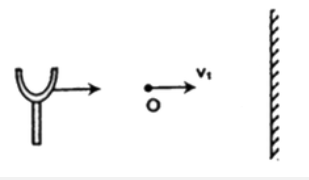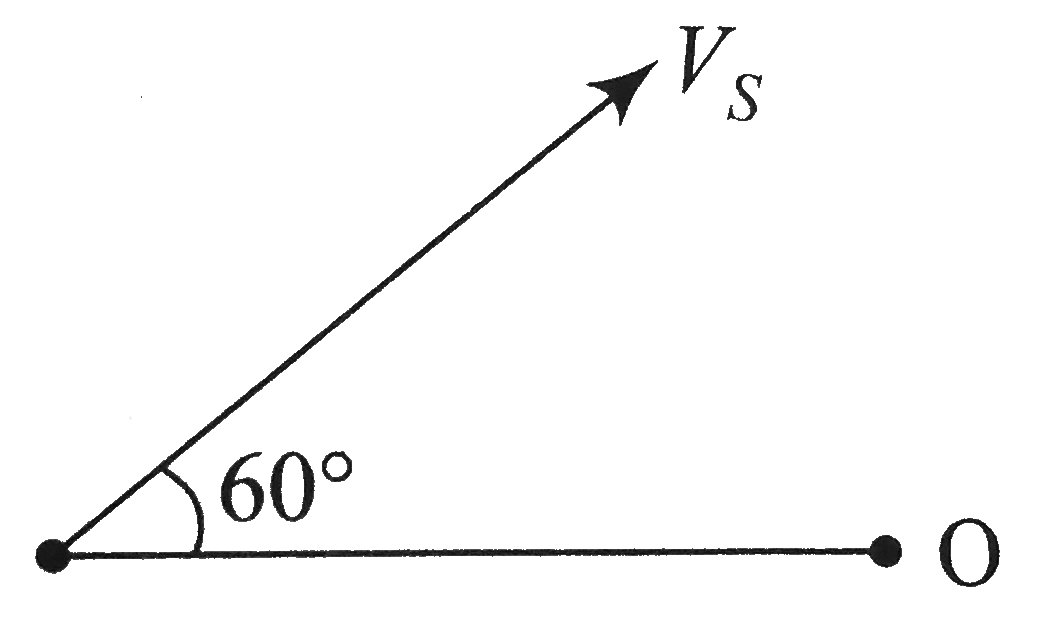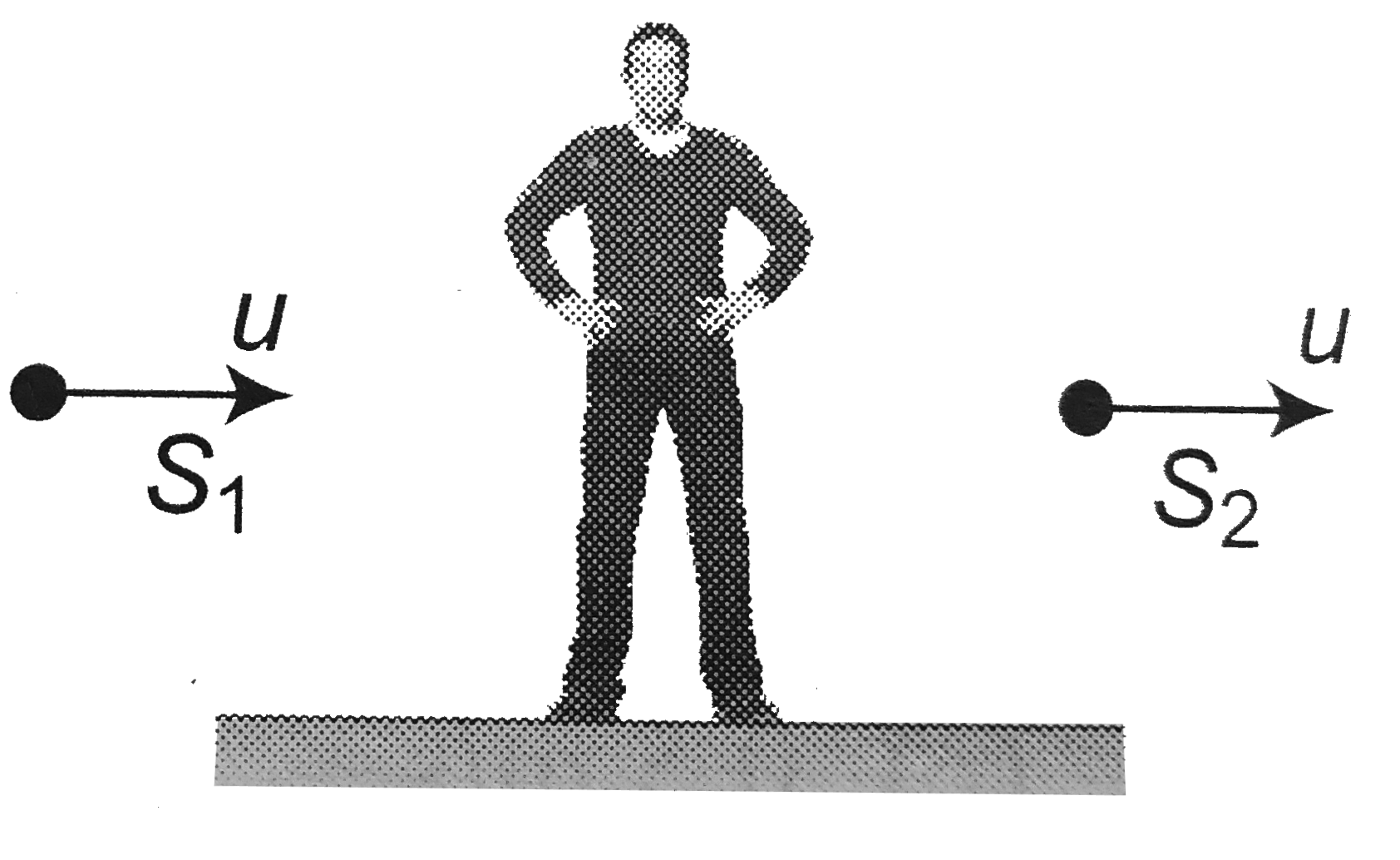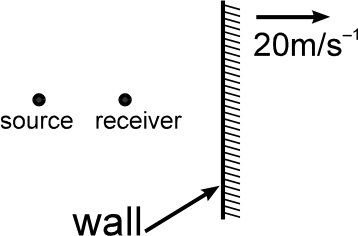Consider two sound sources S1 and S2 having same frequency 100 Hz and the observer O located between them as shown in the fig. All the three are moving with same velocity in same direction. The beat frequency of the observer is

50 Hz
5 Hz
zero
2.5 Hz
The correct Answer is:C
Step by step video & image solution for Consider two sound sources S_1" and "S_2 having same frequency 100 Hz and the observer O located between them as shown in the fig. All the three are moving with same velocity in same direction. The beat frequency of the observer is by Physics experts to help you in doubts & scoring excellent marks in Class 12 exams.
Updated on:21/07/2023Topper's Solved these Questions
- SOUND WAVESBOOK - MOTIONCHAPTER - SOUND WAVESEXERCISE - EXERCISE - 2 ( LEVEL I SECTION A)
2 Videos
- SOUND WAVESBOOK - MOTIONCHAPTER - SOUND WAVESEXERCISE - EXERCISE - 2 ( LEVEL I SECTION B)
4 Videos
- SOUND WAVESBOOK - MOTIONCHAPTER - SOUND WAVESEXERCISE - EXERCISE - 1 (SECTION C)
9 Videos
- SIMPLE HARONIC MOTION BOOK - MOTIONCHAPTER - SIMPLE HARONIC MOTION EXERCISE - EXERCISE -4 (Leve-II) [ JEE 2011]
11 Videos
- SURFACE TENSIONBOOK - MOTIONCHAPTER - SURFACE TENSIONEXERCISE - Exercise - 3 | Section - B Previous Year Problems | AIEEE
12 Videos
Similar Questions
There is a source of sound (a tuning fork) moving towards a reflecting wall will a speed of 30ms−1. The velocity of the sound in air is 330ms−1and the frequency of the tuning fork is 600 Hz. The observer is between the source and the wall and is moving with some velocity V1 towards the wall. The beat frequency heard by the observer is 4 Hz. If the tuning fork is waxed, the frequency beats heard by the observer becomes 3 Hz. If the new frequency of tuning fork is k then k/50 is

View SolutionA source of sound and an observer, both are moving with the same speed, in the same direction. Will there be any Doppler effect observed by the observer ?
View Solution
Knowledge Check

A source of sound S emitting waves of frequency 100Hz and an observer O are located at some distance from each other. The source is moving with a speed of 19.4ms−1 at an angle of 60∘ with the source observer line as shown in the figure. The observer is at rest. The apparent frequency observed by the observer (velocity of sound in air 330ms−1) isA97HzB100HzC103HzD106Hz
A source of sound S emitting waves of frequency 100Hz and an observer O are located at some distance from each other. The source is moving with a speed of 19.4ms−1 at an angle of 60∘ with the source observer line as shown in the figure. The observer is at rest. The apparent frequency observed by the observer (velocity of sound in air 330ms−1) isA103 HzB106 HzC94 HzD100 Hz
Two sources S1 and S2 of same frequency f emits sound. The sources are moving as shown with speed u each. A stationary observer hears that sound. The beat frequency is (v=velocity sound)A2u2fv2−u2B2v2fv2−u2C2uvfv2−u2D2uvf
A source emitting sound of frequency 1000 Hz is moving towards an observer at speed vs=0.90v, (where v is the velocity of sound). What frequency III will be heard by the observer ?
View SolutionA source of sound emitting a note of frequency 200 Hz moves towards an observer with a velocity v equal to the velocity of sound. If the observer also moves away from the source with the same velocity v, the apparent frequency heard by the observer is
View SolutionA source of sound of frequency 300 Hz and a receiver are located along the same line normal to the wall as shown in the figure. Both the source and the receiver are stationary and the wall receeds from the source with velocity 20ms−1.If the beat frequency registered by the receiver is 240x Hz then x is :
(Assume Vsound=300 m/s).

View SolutionA source emitting sound of frequency 1000 Hz is moving towards an observer at speed vs=0.90v,(where v is the velocity of sound) . What frequency will be heard by the observer ?
View SolutionTwo sound waves of frequencies 100 Hz and 200 Hz, travel in the same medium at the same temperature. What is the ratio of their velocities?
View Solution
